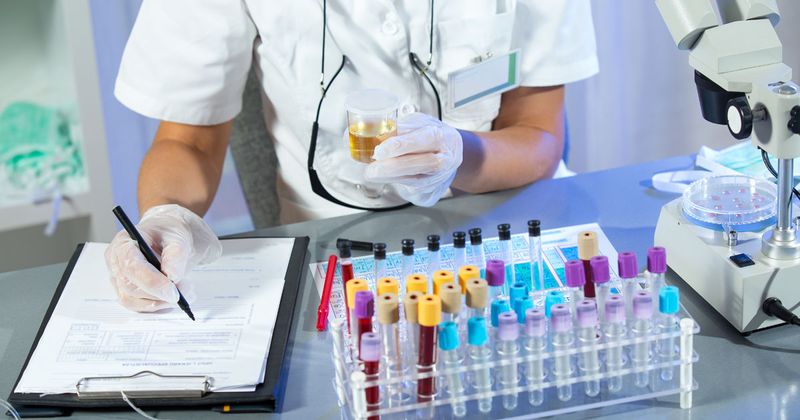Proteinuria may predict AKI, ICU admission and mortality in patients with COVID-19
Measuring proteinuria within 48 hours of hospital admission for COVID-19 may help predict adverse outcomes, as the condition occurred frequently and was strongly associated with AKI, ICU admission and mortality.
“The prognostic value of kidney function impairment during COVID-19 has already been suggested in other series, but our study is the first large series to show that the outcome is associated with simple urine tests, such as [urine protein-creatinine ratio] UPCR and [urine albumin-creatinine ratio] UACR, used in daily practice in contrast with new biomarkers, such as neutrophil gelatinase-associated lipocalin or kidney injury marker-1, that have been evaluated in other situations with high risk of AKI but not yet in early phases of COVID-19,” Alexandre Karras, MD, PhD, of the division of nephrology at Hôpital Européen Georges Pompidou, Assistance Publique-Hôpitaux de Paris, and colleagues wrote.

To evaluate the prevalence of proteinuria, as well as related outcomes, the researchers conducted a retrospective, single-center observational study of 200 patients hospitalized with COVID-19 who had proteinuria measured within 48 hours of admission.
They found that while most patients had normal kidney function (14% had initial serum creatinine greater than 1.5 mg/dL), 42% had a UCPR that was 1 g/g or above at admission.
“Moreover, our results indicate that this proteinuria contains very small amounts of albuminuria, as the urine albumin-protein ratio is [greater than] 50% for only 8% of patients, even among patients with UPCR [of at least] 1 g/g,” the researchers wrote.
Regarding outcomes for the entire study population, the researchers found UPCR of 1 g/g or greater was associated with higher peak median serum creatinine (1.79 mg/dL vs. 1.06 mg/dL), as well as significant risks for AKI (OR = 3.61), need for dialysis (OR = 4.87), admission to the ICU (OR = 3.55) and mortality during hospitalization (OR = 3.56).
Assessing outcomes for only those with normal kidney function at admission (138 of the total 200) demonstrated similar results. Compared with patients with UPCR of less than 1 g/g, those with UPCR of 1 g/g or greater were at higher risk for ICU admission (77% vs. 44%), subsequent AKI (45% vs. 18%), need for dialysis (22% vs. 4.5%) and mortality (43% vs. 14%).
“This study reveals that COVID-19 is associated with early and frequent tubular proteinuria, which is associated with poor kidney outcome and higher mortality among patients with symptomatic COVID-19,” Karras and colleagues concluded. “The comprehension of the precise mechanisms underlying this tubular injury requires further investigations.”









